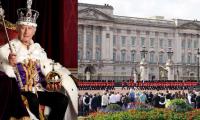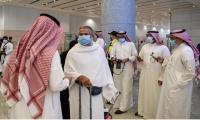The year 1947 saw the independence of two states in South Asia. Although the Radcliffe Line distributed the provinces among these states, 565 Princely states were autonomous in their decision whether to join Pakistan, India or stay independent.
The most strategically located and the largest of these princely states were the State of Jammu and Kashmir. It was the primary water source of the subcontinent. In 1947, it comprised around 77 per cent Muslims and 20 per cent Hindu population, while its ruler was a Hindu monarch, Maharaja Hari Singh.
As the events of partition led to widespread bloodshed in the bordering regions of Pakistan and India, the people of Jammu and Kashmir were already revolting against Maharaja owing to excessive taxation. In the second half of 1947, Dogra Army allegedly killed around 0.2 million men in Muslim majority areas, whereas many families fled to Pakistan. Infuriated at this state-sponsored genocide of Kashmiri Muslims, tribesmen from the neighbouring region of North West Frontier Province (NWFP) came to rescue the affected community. Hari Singh, sensing the inability of the Dogra Army to push back tribal fighters, sought Indian help. On October 26, 1947, he signed an Instrument of Accession to join India, after which another revolt erupted in the Muslim-dominated area of Gilgit Baltistan. Subsequently, Indian troops started to arrive and by November 1947, there was a war in the whole of Kashmir. The tribal fighters supported by locals and Pakistan Army managed to strengthen their hold on Poonch, Muzafarabad, Bhimber and Bagh districts as well as Gilgit Agency. As the war entered the stalemate, Pakistan accepted the Indian request for a ceasefire and this agreement came into place on January 1, 1949, with the UN Resolution to conduct a plebiscite allowing the people of Kashmir to decide their fate.
The subsequent years saw both sides strengthening their hold on their administered regions. The Prime Minister of India, Jawahar Lal Nehru who was himself of Kashmir origin never held the promised plebiscite. The region under Indian occupation, however, got a special status in the Indian constitution. In 1950, the land reforms by the state government under Sheikh Abdullah helped the impoverished Muslim community but it attracted the opposition of influential Hindus against Abdullah, which led to his subsequent arrest in 1953. The Constituent Assembly of J&K ratified the Instrument of Accession thus, Nehru withdrew the offer of the plebiscite. In 1956 in the absence of Abdullah, the J&K Constitution Assembly declared Kashmir as an integral part of India against the spirit of UN resolutions. This decade also saw the gradual occupation of the Aksai Chin region by the People's Liberation Army of China. This led to the 1962 Sino-Indian war where India lost parts of Ladakh and Aksai Chin to China. In 1963, there was a theft of a Holy Relic from the Hazrat Bal shrine in Srinagar. The public outrage on this event led to protests all around the valley but the Holy Relic was recovered in January 1964. In August 1965, Pakistan launched an infiltration operation named Operation Gibraltar which resulted in September 1965 war. Both forces, however, reverted to the ceasefire line as a result of the Tashkent Treaty. The same year Indian government extended the authority of the central government to dismiss elected state governments and the authority to appoint of Governor was also handed over to Delhi. The efforts to extend the authority of Delhi in Kashmir led to the establishment of the Jammu Kashmir National Liberation Front under Maqbool Butt for the independence of Kashmir in 1966.
In 1971, Pakistan lost its eastern half, which resulted in the Simla Agreement of 1972. The status of the cease-fire line was changed to Line Of Control (LoC) and Kashmir was designated as a bilateral issue between Pakistan and India. In 1974, the All Jammu and Kashmir Plebiscite Front dropped their demand for referendum and autonomy, resulting in the return of Sheikh Abdullah as Chief Minister in the elections which were declared unfair and rigged by Jammat-e-Islami under Syed Ali Gillani. Abdullah, in response, banned Jammat-e-Islami by closing down all of its offices in Kashmir. In 1977 elections held in Kashmir Abdullah was re-elected as Chief Minister. This suppression of political opposition prompted overseas Kashmiris to create Jammu Kashmir Liberation Front in 1977.
The ruthless state oppression against democratic forces nullifiedany opposing voice in the state assembly. This nevertheless caused the oppressed population to take up the military struggle against the Indian occupation, primarily inspired by the Afghan struggle against the Soviet occupation. This attracted a further inhumane response from the Indian side. A Kashmiri freedom fighter, Maqbool Butt was hanged in Tihar Jail in 1984, and his body was not handed over to his family, which further triggered the youth in the valley. The death of Sheikh Abdullah created a power rift among his heirs mainly Farooq Abdullah and Ghulam Muhammad Shah. The increase in Indian oppression resulted in a subsequent increase in the struggle for self-determination. The 1987 elections in the valley were again rigged on a massive scale. Farooq Abdullah, the Dehli-backed candidate, was re-installed as Chief Minister despite growing hatred of the public against him. Candidates who opposed Farooq Abdullah's Jammu and Kashmir National Conference (NC), mainly Yasin Malik and Muhammad Yousaf Shah, were arrested and not even allowed to contest the election. This blatant failure of the electoral process further offended the public, who had to protest even for their basic human rights such as electricity, clean water, health, electoral rights, education and above all, the right to self-determination. The Indian side accused Pakistan of this widespread unrest which denied all such accusations. To cope with this unrest, New Delhi dissolved the State's assembly and appointed Jagmohan, a Hindu nationalist, as governor of the J&K. Indian Army was also granted policing rights and judicial cover against extra-judicial killings through Armed Forces Special Power Act 1990. With enhanced powers given to the forces, Jagmohan is accused of orchestrating the Gaw Kadal Massacre which resulted in the death of over 100 civilians in January 1991. The same year in October Border Security Force (BSF) staged a false flag operation in the southern town of Bijbehara, killing over 51 civilians who assembled for Jumma prayers.
In 1994, the Indian Parliament passed a resolution declaring Kashmir as an integral part of India and criminalizing any claim for autonomy. In the following years, prominent Muslim figures such as Qazi Nisar and Jalil Andrabi were shot dead by the occupation forces. In addition, the forced disappearances of civilians were on the rise, which was also verified by the discovery of over 3000 unmarked graves. There existed no tolerance for any diverging political voice when Farooq Abdullah, backed by the Centre, was re-elected as CM of the state. The Kargil War in 1999 allowed India to increase its military presence in the valley. In post 9/11 years, President Musharraf offered a four-point solution to India for the resolution of the Kashmir issue which was rejected by India. Under the shade of war on terror, India cunningly linked the legitimate freedom struggle of Kashmiris with terrorism. It gave Indian forces a cover of counter-terrorism to hide the blood on their hands. As a result of the extension of the Armed Forces Special Powers Act, the rising Kashmiri leadership was silenced with batons and bullets.
In 2008, in an attempt to increase the Hindu population in the valley, 100 acres of land was allotted to Shri Amarnath Shrine Board in an apparent plea to make arrangements for Hindu pilgrims. This decision resulted in a severe backlash from the Muslim population. The state-sponsored oppression in the following days caused over fifty casualties. However, the gradual settlement of Hindus in the valley remained an ongoing agenda of all governments. The year 2010, is recalled in the Kashmir struggle as the year of young blood, Tufail Mattoo a 17-year-old boy with a bag of books on his shoulder was killed by occupation forces. The murder sparked a series of protests all over Kashmir. Reportedly, more than 100 civilians lost their lives as a result of the force used against peaceful protesters. In 2013, Kashmiri leader Afzal Guru was hanged in Dehli's Tihar jail and his body was also not handed over to his family. Since the BJP government came to the Centre, the frequency of rape, disappearance, extra judicial killings and massacres has increased exponentially. The inquiry of the Chittisinghpura massacre by the Indian Supreme Court in 2012 highlighted that it was a false flag operation by the Indian Army staged on the eve of the US president's visit. The Indian Army killed five bystanders as the preparators of the massacre which was proved innocent by the Supreme Court. The subsequent false flag operations were also staged to associate the legitimate freedom struggle with global terrorism.
Following the death of the freedom fighter Burhan Wani in 2016, a new wave of resistance against the occupant force emerged. To cope with this challenge, Indians launched Operation All-Out which was primarily aimed at eliminating or incapacitating the Kashmiri youth. The wide use of pallet guns in this operation blinded many people. The penetration of pallets into sensitive body organs was unable to be removed, thus causing serious health issues. This blatant use of aggression resulted in over 150 reported deaths, nevertheless, Indian forces were still unable to halt this wave of youth demanding the right to self-determination. India revoked the special status of Kashmir on August 5, 2019, and due to the fear of backlash, Indian authorities put a complete communication blackout in the region. The actual situation of human rights in this biggest prison on the globe is still unknown. As the Indian government distributed Kashmir into two union territories, Indian authorities have also issued a new domicile law allowing Hindus to permanently settle in Kashmir, which is much similar to the Israeli settlement plan in the Palestinian areas. Kashmir is often called a Heaven on Earth, but its third generation still awaits its right to self-determination as promised under the resolutions of the United Nations Security Council (UNSC).
-The writer is an MPhil scholar of International Relations at Iqra University Islamabad. He can be accessed at: ali_blogs@yahoo.com
Justice Tariq Mehmood Jahangiri took up Sher Afzal bail plea for hearing
CCP’s announcement made, stating that applicants are required to pay money upfront in order to enroll
According to details, the police took a van filled with female students of medical college to a police station on...
In this image, the logo of the Nowshera Press Club can be seen. — Facebook/Nowshera Press Club/FileNOWSHERA: The...
Senator Sherry Rehman said the PPP had previously extended an offer to the PTI to form a government, but the PTI is...
A division bench comprising Justice Shakeel Ahmad and Justice Dr Khurshid Iqbal heard the petition filed by the KP...







